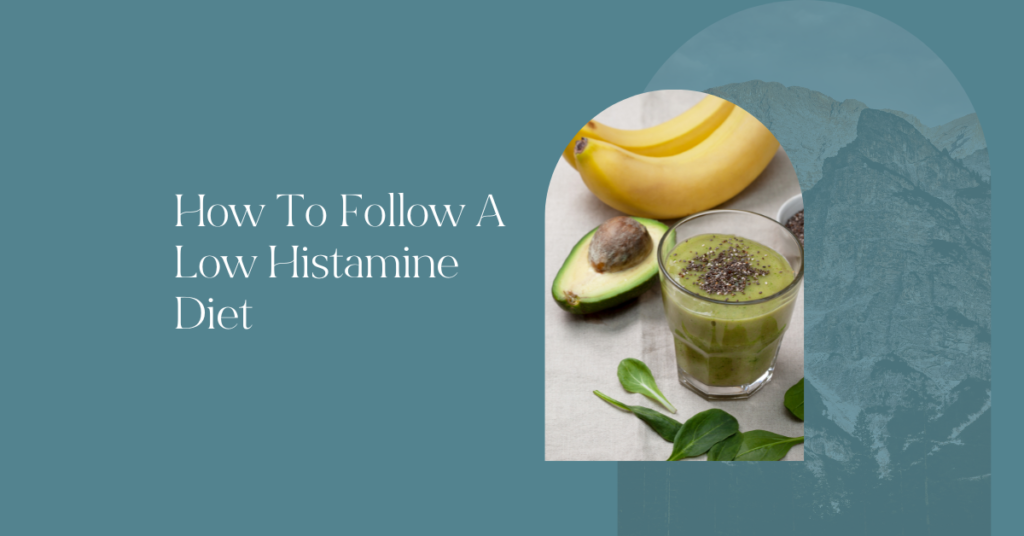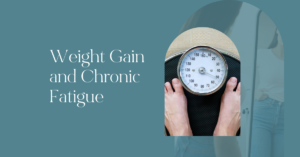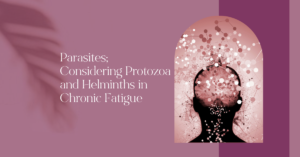A low histamine diet may be part of the solution for Mast cell activation syndrome (MCAS) and histamine intolerance which can be part of the complex web of imbalances in Chronic Fatigue Syndrome (CFS/ME) and other chronic illnesses.
To understand the impact of MCAS and histamine intolerance on chronic illness specifically, you can read my previous piece on MCAS, Histamine and Fatigue.
This blog specifically is designed to help you implement a low histamine diet should you suspect that MCAS and /or histamine intolerance are a problem for you.
Quick Resources
If you are looking for a quick resource to download, I highly recommend this website: https://www.histaminintoleranz.ch/de/downloads.html
Where To Start?
A low histamine diet can be an overwhelming diet to follow. Each person will have their own unique tolerance for histamine containing foods and this makes it hard to know exactly what will work for you.
Long term, you want to have as broad a diet as possible, but in the short term, you may need to start with a very low histamine diet and then expand your food choices as your capacity and tolerance increases.
Therefore, as you get started, you’ll want to familiarise yourself with the food lists and focus only on the low histamine options to begin with and completely avoid anything that needs to be avoided or cautioned.
Histamine can also build up in leftover foods or be influenced by cooking (e.g. slow cooking or slow roasting) so you will also want to pay attention to the cooking and prepping tips.
Remember that dietary change alone may not be enough. You may need to actively be supporting your nervous system, taking relevant supplements and dealing with infections and triggers like personal care and cleaning products.
A personalised combination of all of the above should offer relief from your symptoms and a greater sense of stability. Depending on the complexity of your case, you may want to work with a Practitioner who can guide you.
Tips for Success
Having worked with many different clients on many different elimination diets here is what I know will help:
- Proper planning and preparation; make sure you have food available that you can eat so that you don’t go hungry. Know what you will be having for your daily and / or weekly meals. Organisation is fundamental to success.
- Take it slowly; some people can throw themselves into change but when your energy is low and you are struggling with your health, you may need more time and less pressure to make change. If necessary, take smaller steps that lead you towards the bigger goal.
- Crowd in first; if you are taking things slowly my encouragement is to focus on eating more of the low histamine foods before you start to cut out the high and moderate histamine foods. This will ensure that you are eating enough and you are not left hungry.
- Eat enough; under-eating can drive cravings which may impact compliance, it can also drive blood sugar imbalances, poor sleep and low energy. If you need to, log your food in an app like My Fitness Pal to make sure you are eating enough food each day and a good balance of protein, carbohydrate and fats for your needs.
Be Aware of Other Food Reactions
There are many different ways we can react to foods. For example:
- Gluten Non-Celiac Sensitivity and Celiac Disease
- Dairy Intolerance, Allergy or Sensitivity
- Gluten Cross-Reactions
- Allergies or sensitivities to any food
- FODMAP intolerance
- Sulphur Intolerance
- Nightshades, lectins, oxalates, salicylates etc.
You may be reacting to foods over and above the histamine load. Therefore, in addition to your low histamine diet, some other foods or groups of foods may need to be excluded. It can be a minefield for those with complex health issues so my general advice is;
- Follow a diet which is minimally processed so that you are very clear on exactly what is going into your mouth.
- I am a big fan of the paleo diet which would exclude grains, dairy and many, but not all, of the gluten cross-reactive foods.
- Work with a practitioner to identify specific needs.
Food Prep and Storage
When it comes to following a low histamine diet, how you prep, cook and store your food can make a difference. Everyone is different, but the more sensitive you are, the more the details matter.
Here are some top tips:
- Because meat based products need to be fresh, my recommendation would be to buy frozen fish, poultry or meat products from the allowed lists – preferably those that are frozen directly after catch or slaughter. You can store the frozen produce in your freezer.
- When defrosting frozen meat, thaw quickly and cook straight away – even when it is a little bit frosty for those who are very sensitive. Two hours is the upper limit for thawed meat to be sitting in your refrigerator.
- Once food has been cooked, histamines may build up in the food so ideally you want to eat straight away. You can freeze leftover food and then thaw and reheat quickly when you are ready to eat your leftovers. Do not leave to cool at room temperature, freeze straight away.
- Although freezing slows histamine build up, it does not stop it completely. Therefore, be mindful of how long you have foods in the freezer for. Recommended:
- Upper limit of 4 months for uncooked meat
- 3-4 weeks for cooked produce
- When freezing cooked food use silicon or glass, avoid plastics where possible. Toxins leached from plastics into food fat can trigger histamine release
- Make sure your work surfaces, chopping boards and knives are clean.
- Wooden chopping boards are better than plastic for two reasons; less exposure to toxins and may harbour less bacteria.
- The longer food is cooked for, the greater the histamine build up. Therefore slow cooking is less preferred to a quick flash fry, poach or stir fry.
Expanding Your Diet
When you feel stable and on top of your symptoms it will be time to expand your diet. Here you can add in foods on the caution list first. The recommendation being to add in small amounts and try one new food at a time so that you can get an assessment of the load that you can tolerate. All being well, you can expand into the avoid food list.
Some people may have to manage their diet very cautiously throughout their life long. I have seen other people successfully introduce high histamine foods back into their diet without any long term restriction. This will depend on many different factors such as:
- Genetics SNPs for DAO and HNMT
- Ongoing health challenges; mould, infections, toxins
- Nervous system state
- Nutrient deficiencies
- Digestive health
To give yourself the best shot of better histamine tolerance as a whole, you want to address the whole picture and root cause, not rely on food elimination alone.
Food Lists
Proteins
Low Histamine Meat, Fish and Poultry
- Fresh meat and poultry
- Frozen meat that has been rapidly thawed
- Eggs
- Absolutely fresh caught fish
- Frozen Fish rapidly thawed
- Best fish choices: pollock, cod, trout, whitefish
Avoid / Caution Meat, Fish and Poultry
- Caution against pre packed mince meat, pre-cooked sausages and venison
- Caution against “fresh fish” from shop shelf and over the counter fish markets or restaurants
- Avoid canned, cured, dried, marinated and smoked meats
- Avoid matured or dry aged meat
- Avoid Finely chopped or pureed meat e.g meatloaf, cold cuts, spreads and meatloaf
- Avoid Offal – especially liver
- Avoid Sausages and salami
- Avoid canned, marinated, salted, smoked, dried or pickled fish and seafood
- Avoid species: Tuna, mackerel, herring, sardines, anchovies, mahi mahi
- Avoid fish sauces
- Avoid shellfish: mussels, lobster, crabs, shrimps and prawns
Some people who are very very sensitive to histamines may not tolerate animal protein when those animals have been raised on corn, soy or wheat. Therefore, grass fed produce may be preferable.
Legumes
Legumes may need to be avoided. For those who need to rely on legumes in their diet for protein (e.g. vegans) these are the better choices:
- Beans – Dried – Soak overnight in water and pressure cook. Freshly cooked (kidney, black, navy, etc.) – 9g protein per 100g
- Garbanzo / Chickpeas – 9g protein per 100g
- Lentils (legumes are higher lectin, use in moderation) – 9g protein per 100g
Dairy Products
Due to the inflammatory nature of dairy, it might be best to keep dairy generally at a low level in the diet or exclude completely. If you want to include dairy products in your diet, take note of those which are lowest in histamine.
Low Histamine Milks
- Raw milk directly from the cow
- Pasteurised milk, butter, cream and whey
Low Histamine Cheese
- Cream cheese
- Mozzarella
- Cottage cheese
- Mascarpone
- Ricotta
- Goat’s cream cheese
- Young Gouda
Caution or Avoid
Milk & Cheese – Caution
- Raw milk
- Yoghurt
- Kefir
- Sour Milk
- Buttermilk
- Sour cream
- Creme Fraiche
- Feta Cheese
Milk & Cheese – Avoid
- Matured cheese
- Hard cheese
- Semi-hard cheese
- Soft processed cheese
- Blue cheese
- Mouldy cheese
- Fondue
- Aged gouda
Protein Powders
Carbohydrates
Grains may increase blood sugar therefore we must consider grain consumption not only in the context of histamine but their impact on the body as a whole. Some people may react to gluten found in grains. Grains can be problematic for people with a high myocotoxin load.
Low Histamine Grains
- Rice
- Any kind of grain in different forms e.g. granules, flakes, flour, pasta etc.
Caution
- Malt
- Wheat germ
- Buckwheat
Avoid
- Yeast
- Sourdough
Low Histamine Vegetables
- Artichokes
- Asparagus
- Basil
- Bean Sprouts
- Beetroot
- Bok Choy
- Broccoli
- Broccolini
- Brussels Sprouts
- Cabbage – Chinese
- Cabbage – Green and Red
- Cabbage – Napa
- Carrots
- Cauliflower
- Celery
- Celeriac or Celery Root
- Chives
- Coriander
- Collards
- Courgette
- Corn (Fresh)
- Cucumber
- Daikon Radishes
- Dandelion Greens
- Dill
- Escarole
- Fennel
- Garlic
- Ginger
- Green Split Peas
- Jicama
- Kale
- Kohlrabi
- Leafy Greens
- Leeks
- Lettuce – Butter
- Lettuce – Endive
- Lettuce – Leaf Green & Red
- Lettuce – Iceberg
- Lettuce – Radicchio
- Lettuce – Romaine
- Mint
- Mustard Greens
- Okra
- Onions – white
- Parsley, Curly
- Parsley, Flat or Italian
- Parsley Root
- Parsnips
- Potatoes
- Bell Peppers
- Radishes
- Rhubarb
- Rutabaga / Swede
- Rocket
- Sage
- Saffron
- Shallots
- Squash, Butternut
- Squash, Spaghetti
- Squash, Winter
- Squash, Yellow
- Sweet Potatoes
- Swiss Chard
- Turnip
- Watercress
- Fermented Foods
- Green Beans, String Beans
- Kimchi
- Yellow Split Peas
Vegetables to Avoid
- Fermented vegetables e.g. sauerkraut, kimchi
- Eggplant
- Mushrooms
- Peas (pea protein may be okay but if you suspect you react to it, discontinue using it)
- Pumpkin
- Sauerkraut
- Spinach
- Soybeans / Edamame
- Tomato and all tomato products
- Tinned corn
Low Histamine Fruits
- Apple
- Apricot
- Blackberry (small amounts)
- Blueberry (small amounts)
- Cantaloupe (rock melon)
- Cherries
- Cranberry (fresh)
- Currant (fresh)
- Dragon Fruit
- Figs
- Guava
- Honeydew
- Kiwi
- Lemon – 1/2 tsp
- Lime – 1/2 tsp
- Loquat
- Mango
- Nectarine
- Passion Fruit
- Peach
- Plantain
- Pomegranate
- Watermelon
Fruits to Caution or Avoid
- Caution overripe fruits with rotten parts
- Avoid:
- Avocado
- Strawberries
- Raspberries
- Lemons
- Oranges and other citrus
- Banana
- Pineapple
- Kiwi
- Pears
- Papaya
- Guava
Fat Sources
Low Histamine Nuts
- Almonds
- Brazil Nuts (only 3-4 nuts/day max)
- Chia Seeds
- Chestnuts (fresh)
- Coconut Cream
- Coconut Meat (fresh)
- Coconut Milk 100% Pure only (no additives)
- Flax Seeds
- Hazelnuts
- Hemp Protein Powder
- Hemp Seeds
- Macadamias
- Pecans
- Pine Nuts
- Pistachios
- Poppy Seeds
- Pumpkin Seeds
- Sesame Seeds
- Sunflower Seeds
- Tiger Nuts (not an actual nut, but a tuber)
Nuts to Avoid
- Walnuts
- Cashews
- Peanuts
Low Histamine Oils and Dressings
- Coconut Oil – Extra Virgin
- Flax Oil – Cold Pressed
- Macadamia Oil
- MCT Oil
- Olive Oil – Extra Virgin (use cautiously)
- Rice Bran Oil
- Salad Dressings – Homemade with allowed ingredients
- Sesame Oil
- Nuts and seeds from the allowed list
- Nut butters from allowed list
Take caution with walnut oil.
Low Histamine Herbs and Spices
- Basil
- Bay Leaves
- Cardamom
- Caraway
- Chives
- Coriander
- Cumin
- Curcumin Powder
- Curry Leaves
- Dill
- Fennel
- Fenugreek
- Garlic
- Ginger
- Lemongrass
- Mint
- Oregano
- Parsley
- Peppercorns, Pink
- Peppermint
- Rosemary
- Saffron
- Sage
- Salt – only unrefined
- Shallots
- Spirulina
- Tarragon
- Thyme
- Turmeric
Avoid:
- Allspice
- Anise
- Cinnamon
- Chilli Powder
- Cloves
- Curry powder
- Cayenne
- Foods labelled “with spices”
- Foods labelled “natural flavours” or “artificial flavours”
- Mace
- MSG
- Mustard
- Nutmeg
- Paprika
- Peppercorns – Black, Green, White – may need to limit to small amounts
- Seasoning packets with restricted ingredients
Low Histamine Drinks
- Coffee – ideally a low mycotoxin brand such as “Lean Caffeine” or “Exhale Coffee”
- Dandelion Root Tea
- Herbal Teas, except black, green, white, rooibos tea
- Juice – Pure freshly squeezed juices of allowed fruits and vegetables – limit fruit juice due to sugar
- Mineral Water – Plain and carbonated
- Water – with fresh squeezed lemon or lime (if tolerated)
Caution:
- Rice Milk
- Oat Milk
- Clear Spirits
- Black tea
- Green tea
- Coffee and espresso
Avoid
- Alcohol
- Soy Milk
- Nettle Tea
Sweets
Insulin can increase histamine production therefore, although certain sweet food may be low in histamine, we must consider their impact on blood sugar.
- Honey
- Stevia
- Agave Syrup
Caution
- White chocolate
Avoid
- Cocoa
- Cocoa mass
- Dark chocolate
- Carob
Other
- Table salt
- Spirit vinegar
- Apple cider vinegar
- Cornstarch
- Corn Flour
- Potato starch
Avoid
- Vinegar (especially wine vinegar and balsamic vinegar)
- Yeast extract
- Bouillon
- Broth
- Hot spices
- Soy sauce









